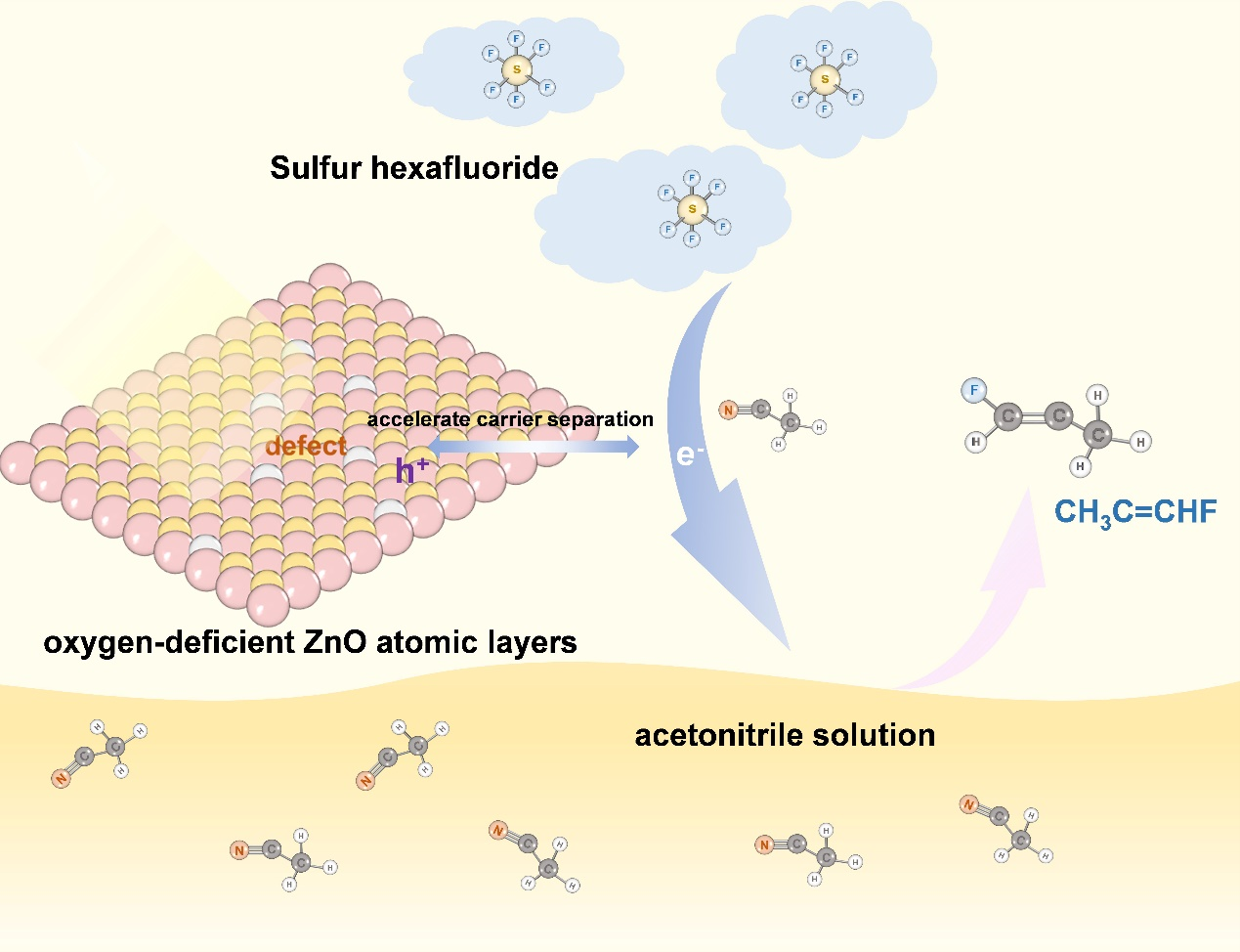《Catal. Lett.》: SF6 Photoconversion Triggered by Oxygen‑Deficient ZnO Atomic Layers Under Mild Condit--ions
Shan Zhu, Yue Zhao, Fengxiang Ma, Feng Zhu, Wei Liu, Jun Cao, Yumei Song, Jinyu Ding,* Peijin Du*
The majority of reaction conditions employed in SF6 conversion research are characterized by elevated temperatures and pressures, resulting in a considerable expenditure of energy. The transformation of SF6 under mild conditions represents a viable methodology at this time. It has been demonstrated that the conditions required for the photoconversion of SF6 are relatively mild. Furthermore, the defect engineering of catalysts has been shown to be an effective strategy for enhancing the photocatalytic performance of photocatalysis. Thus, we utilized two-dimensional materials as a model for our research. These materials have active sites that are highly dense and uniform, allowing us to thoroughly examine how defects affect the SF6 photoconversion process. By synthesizing ZnO atomic layers with oxygen vacancies and confirming their presence using various techniques, we found that these vacancies enhanced light absorption and promoted the separation of charge carriers. These results suggest that the oxygen-deficient ZnO atomic layers have superior SF6 photoconversion performance compared to the pristine ZnO atomic layers. Overall, the findings of this study indicate that the incorporation of defects in photocatalysts is a crucial strategy for optimizing pivotal photocatalytic processes and enhancing the efficacy of SF6 photoconversion.

Figure 1. Schematic for the photoconversion process of SF6 over defective ZnO atomic layers
